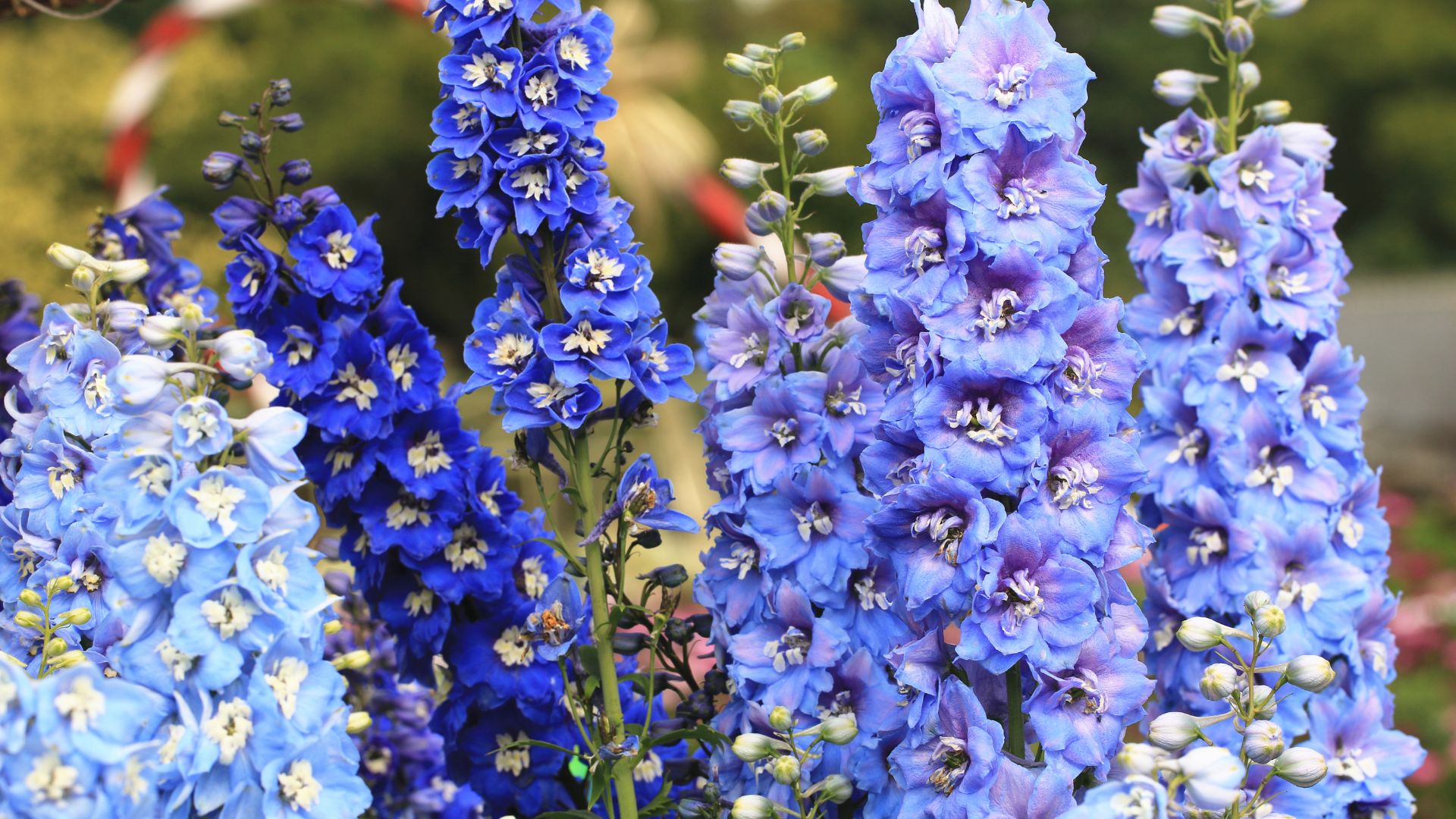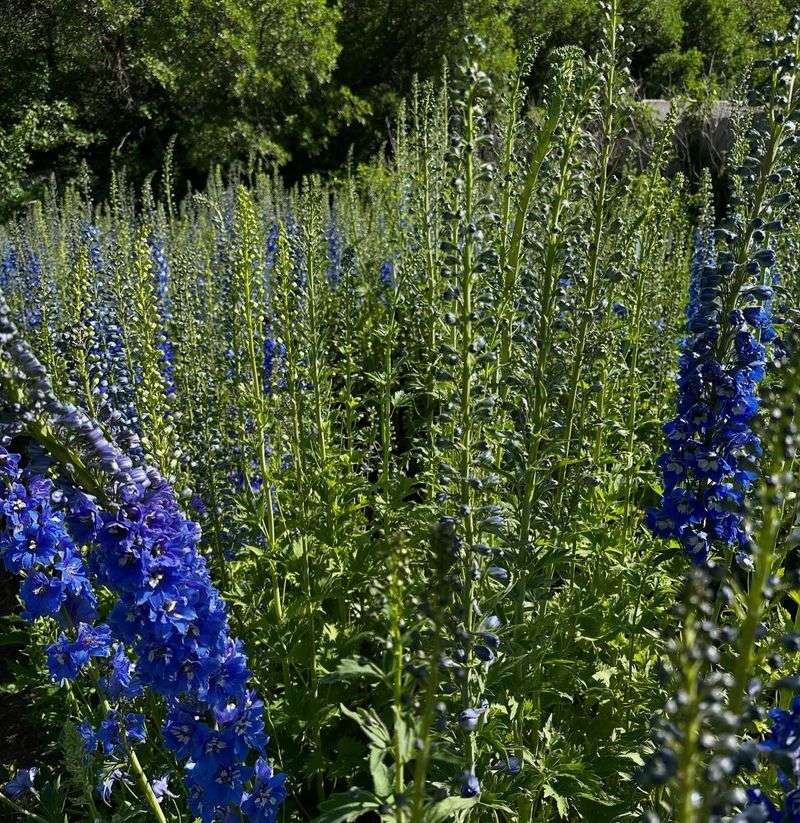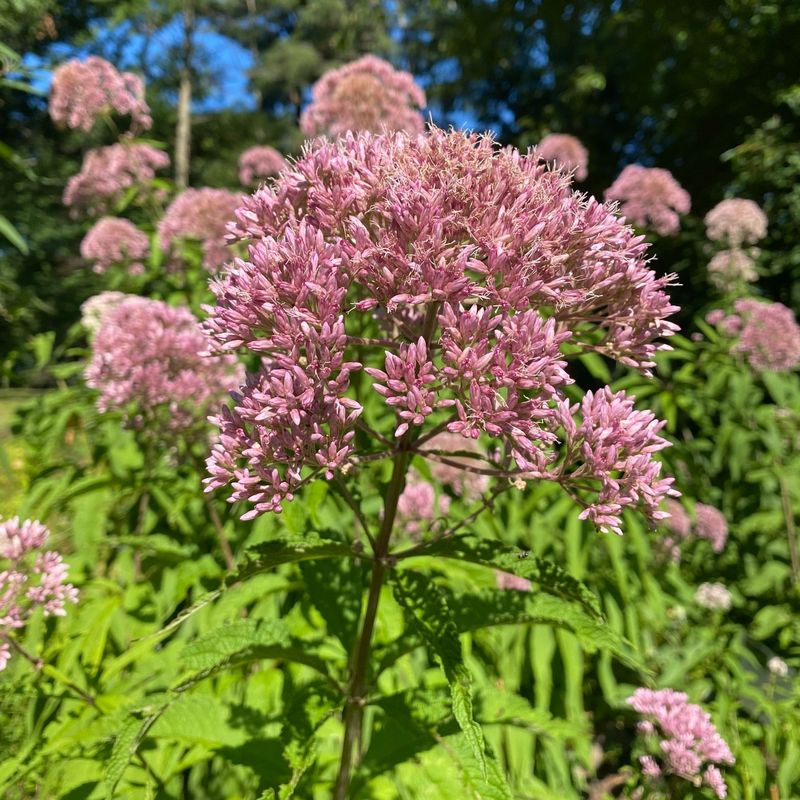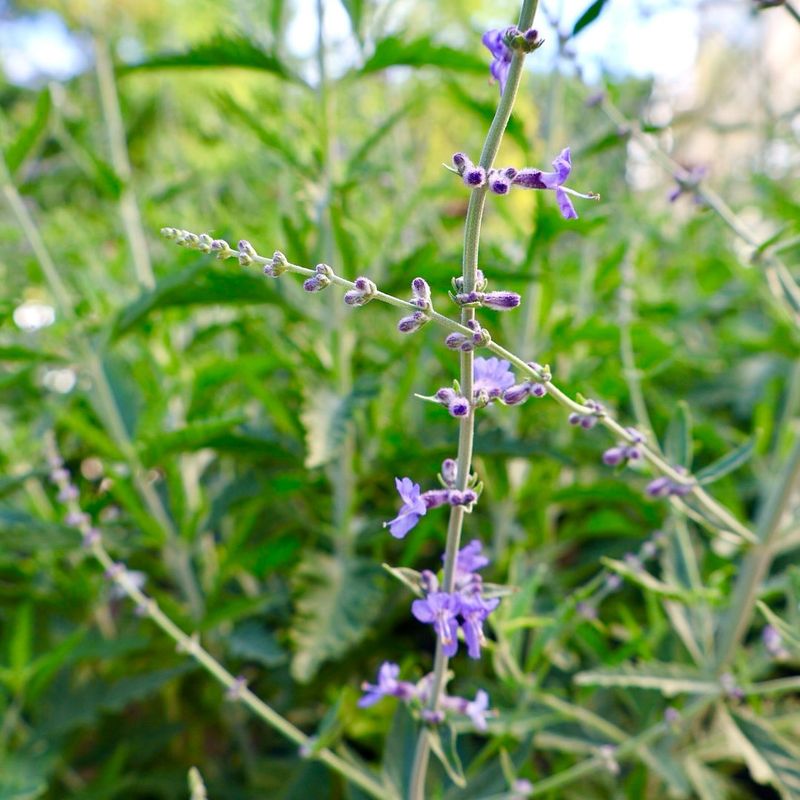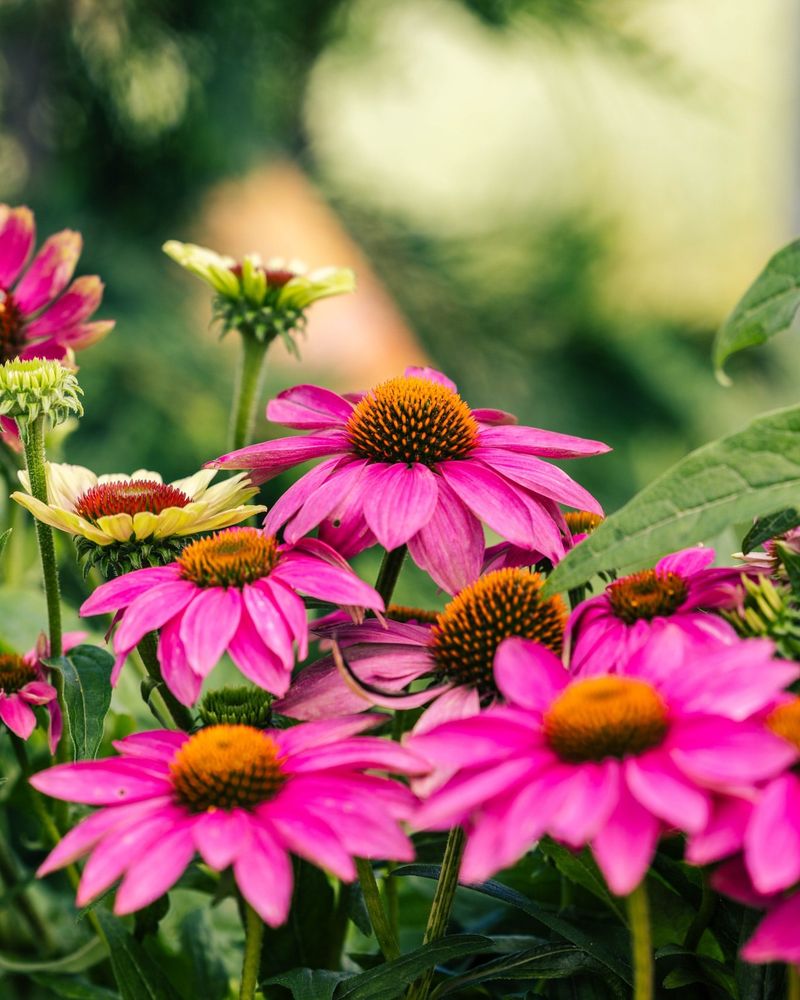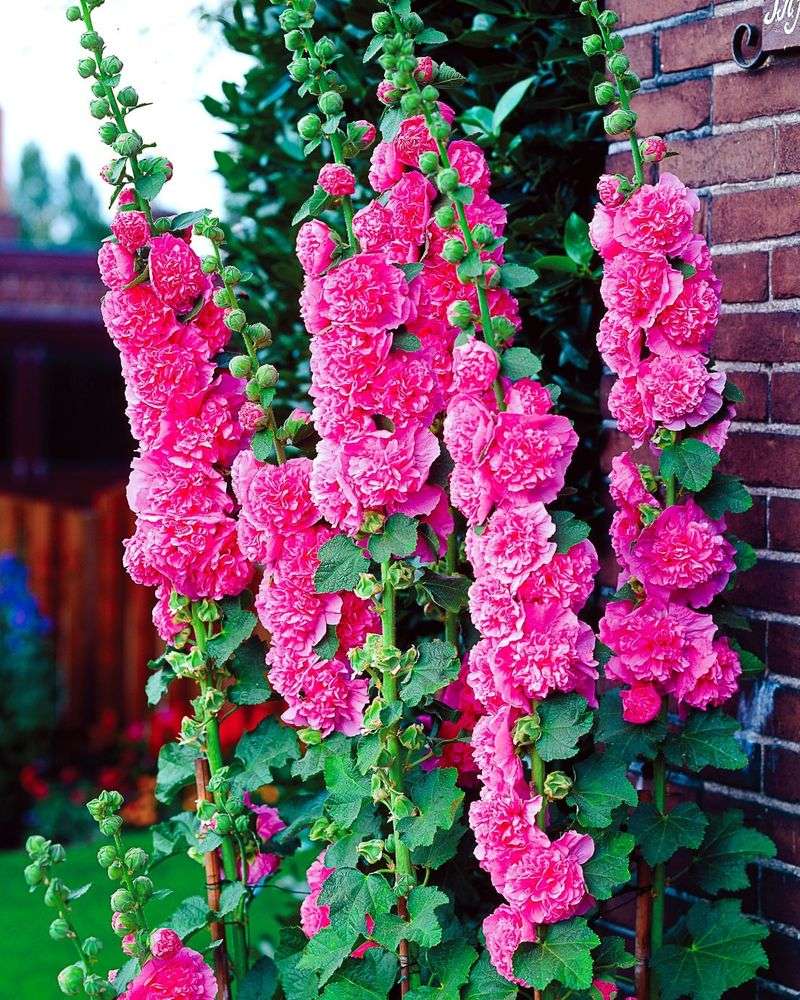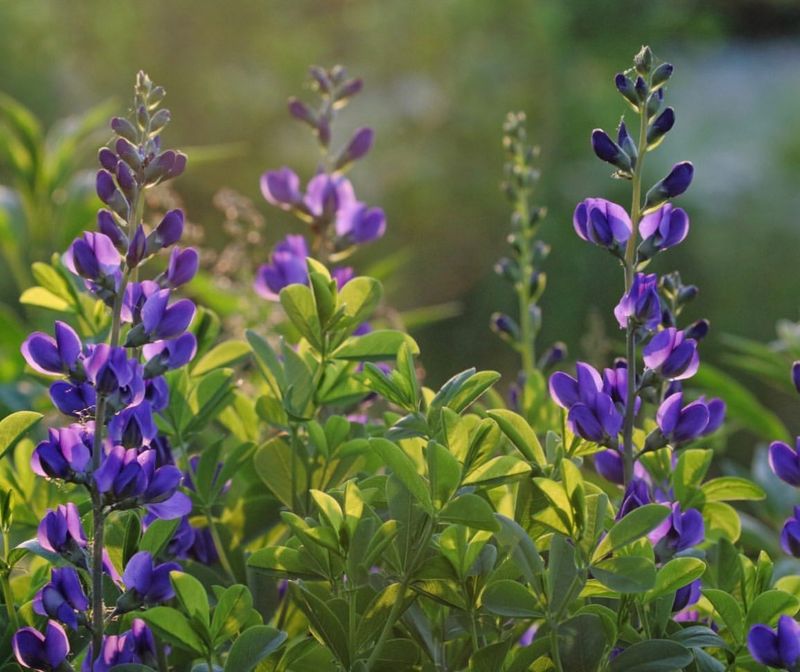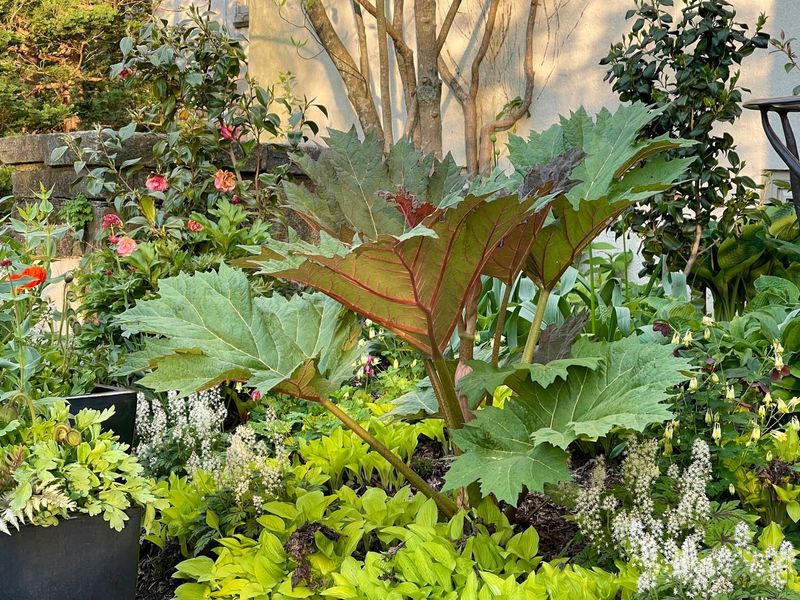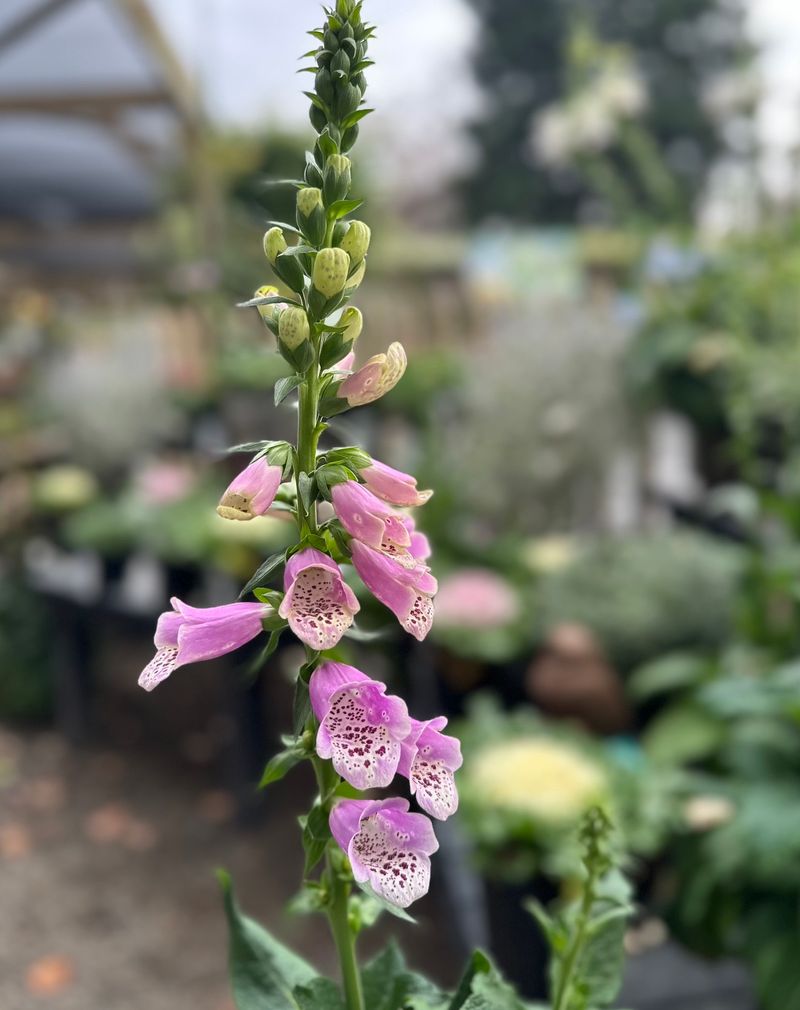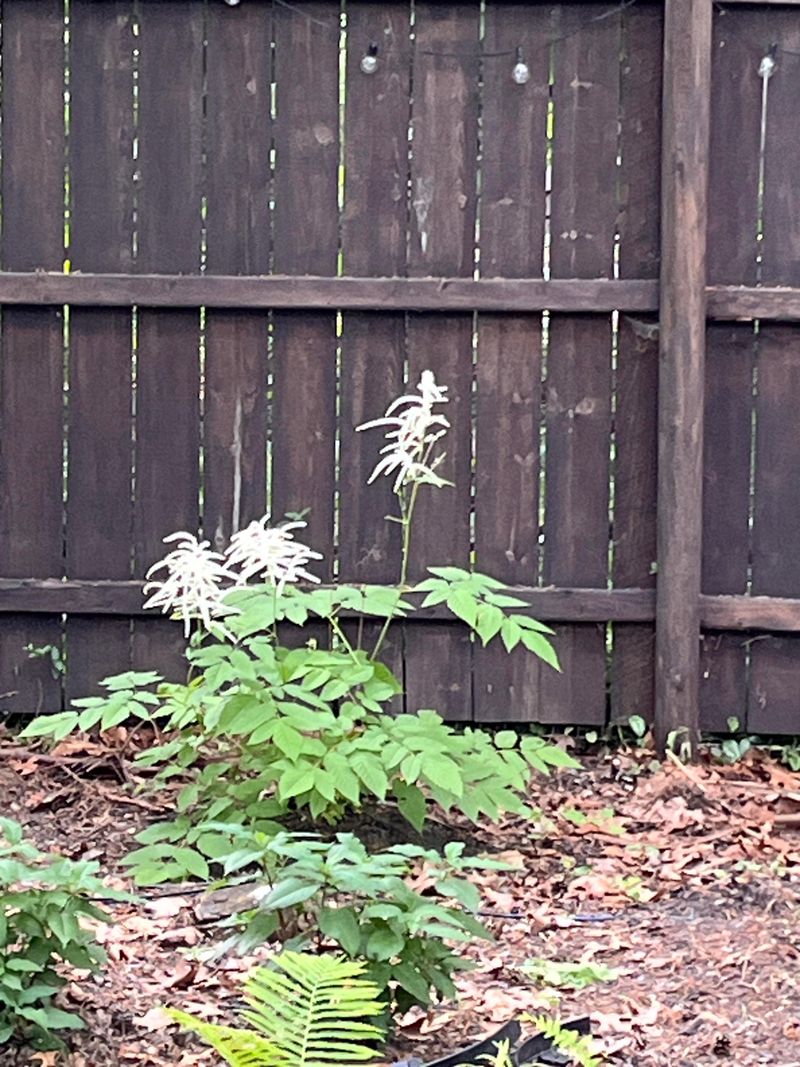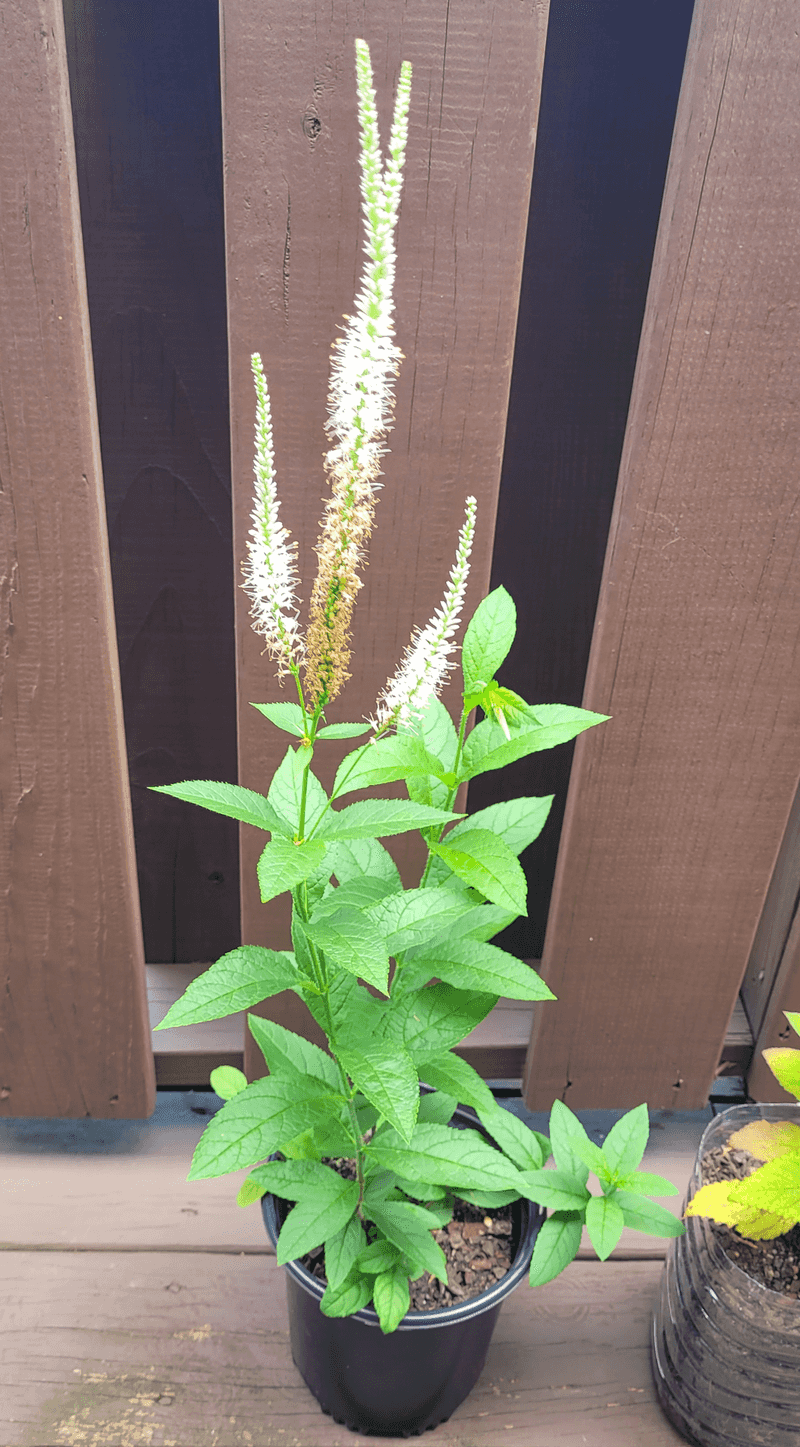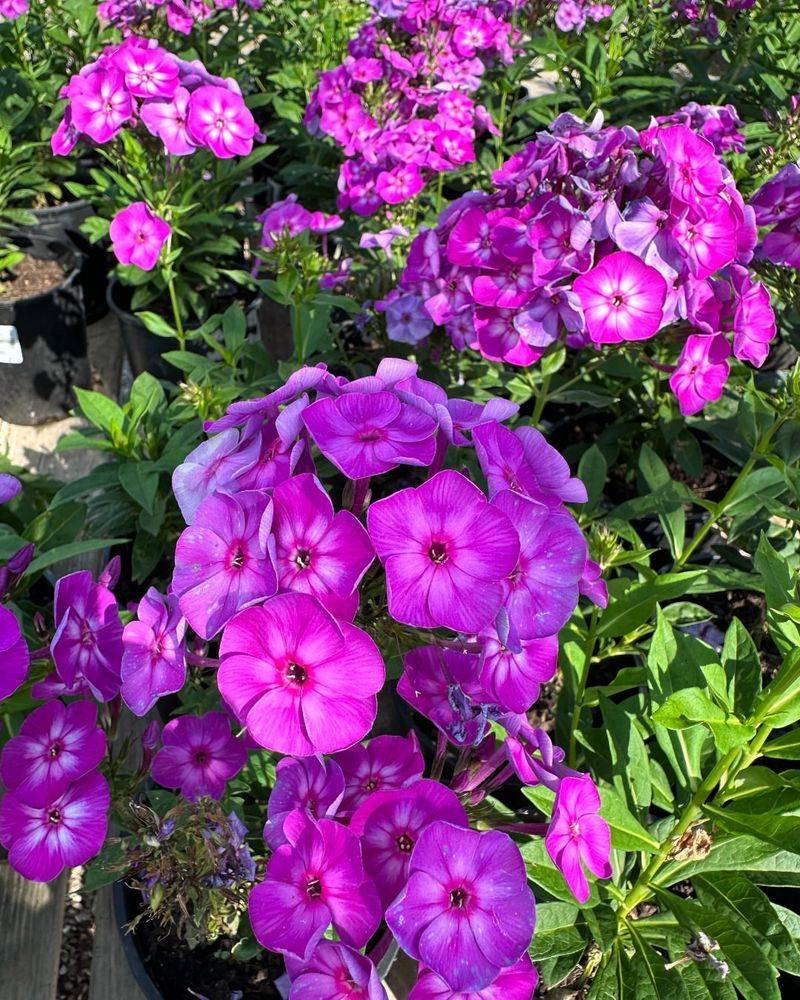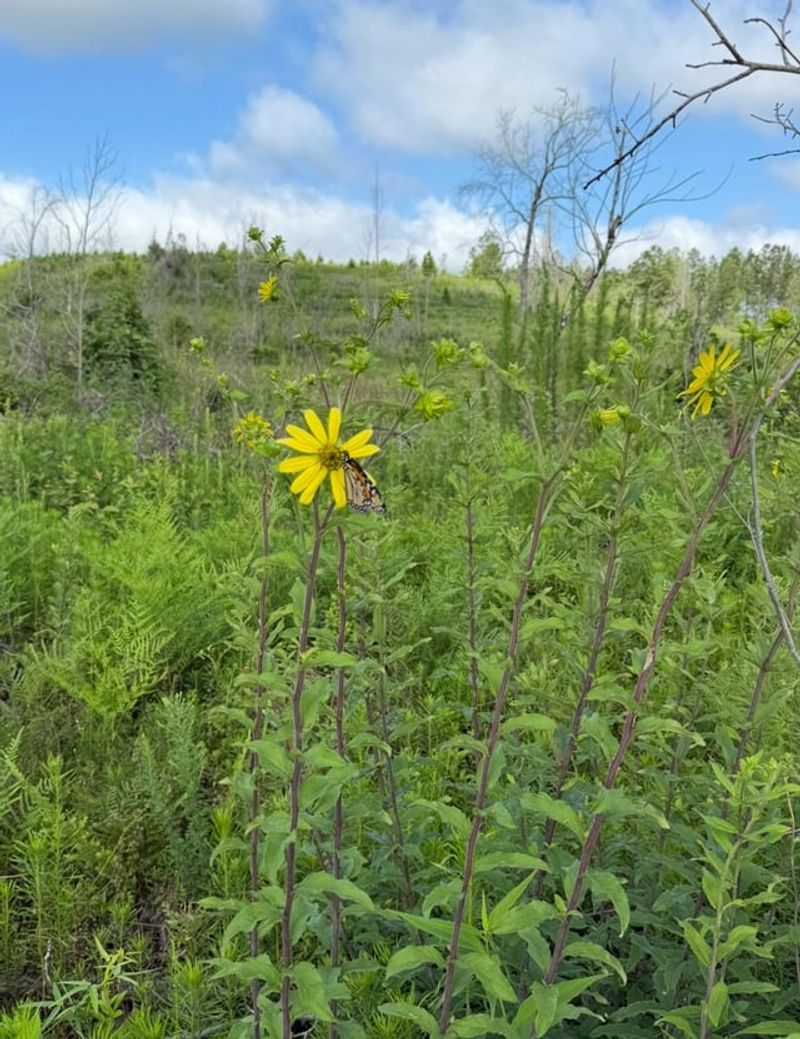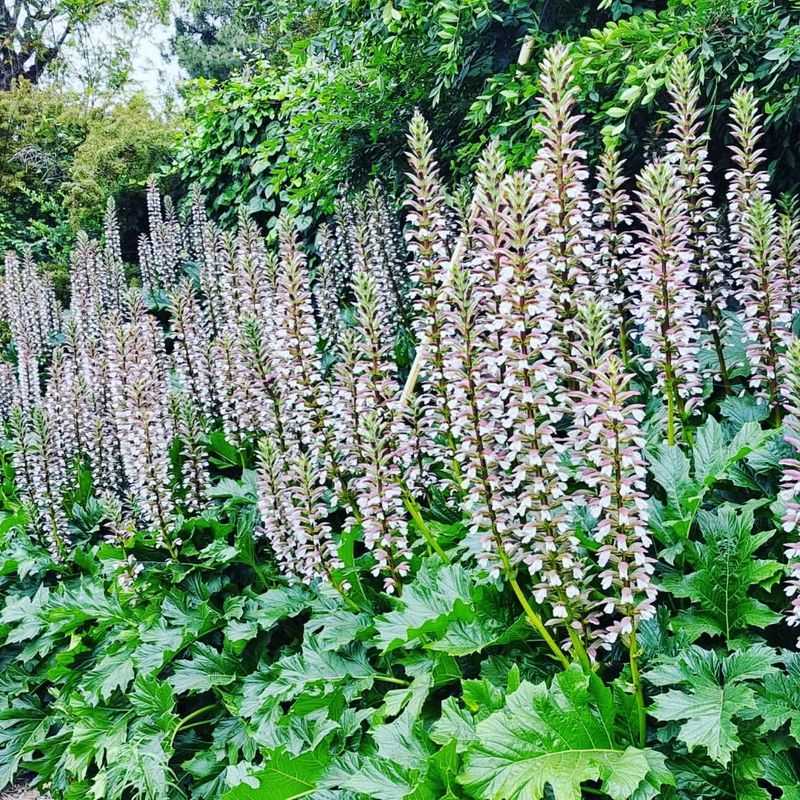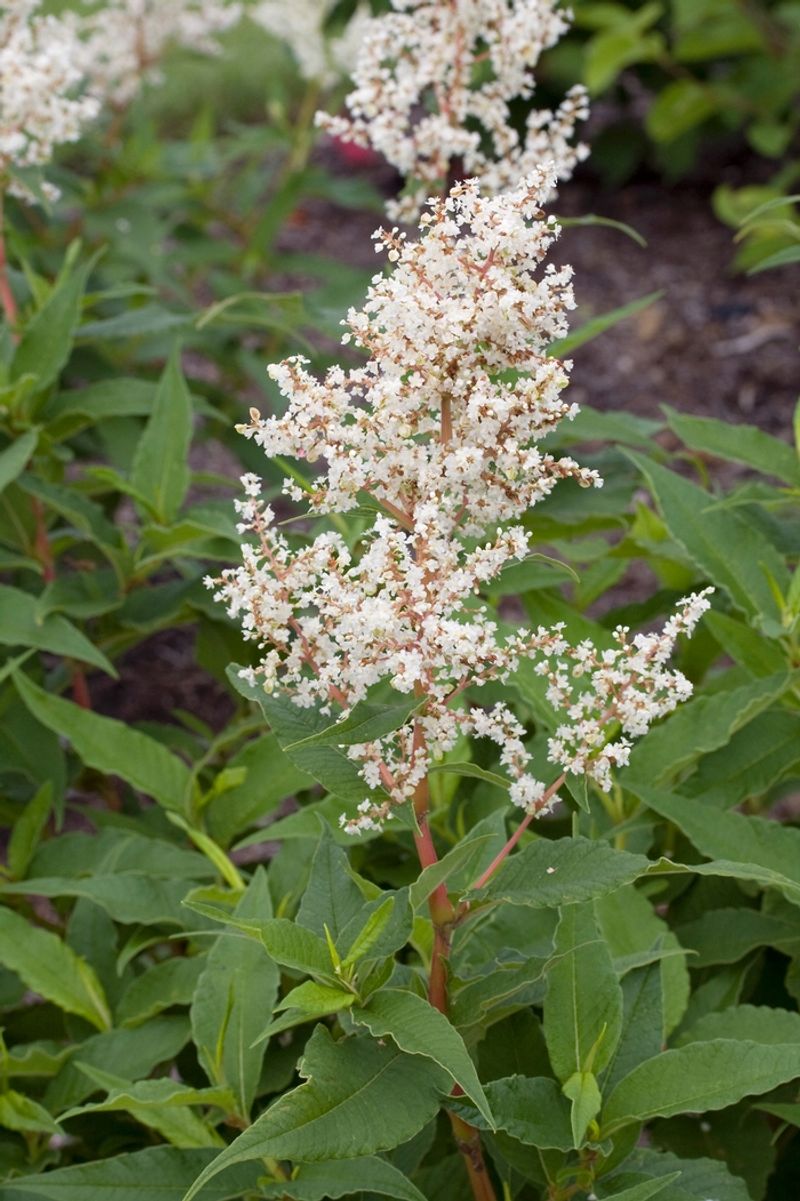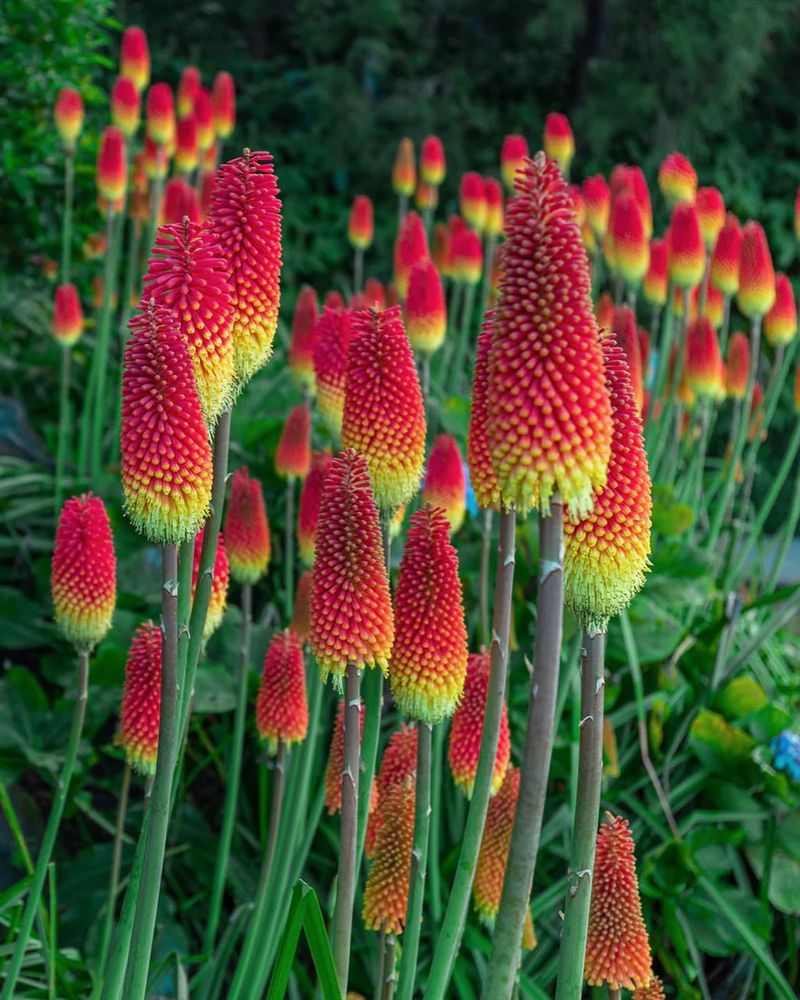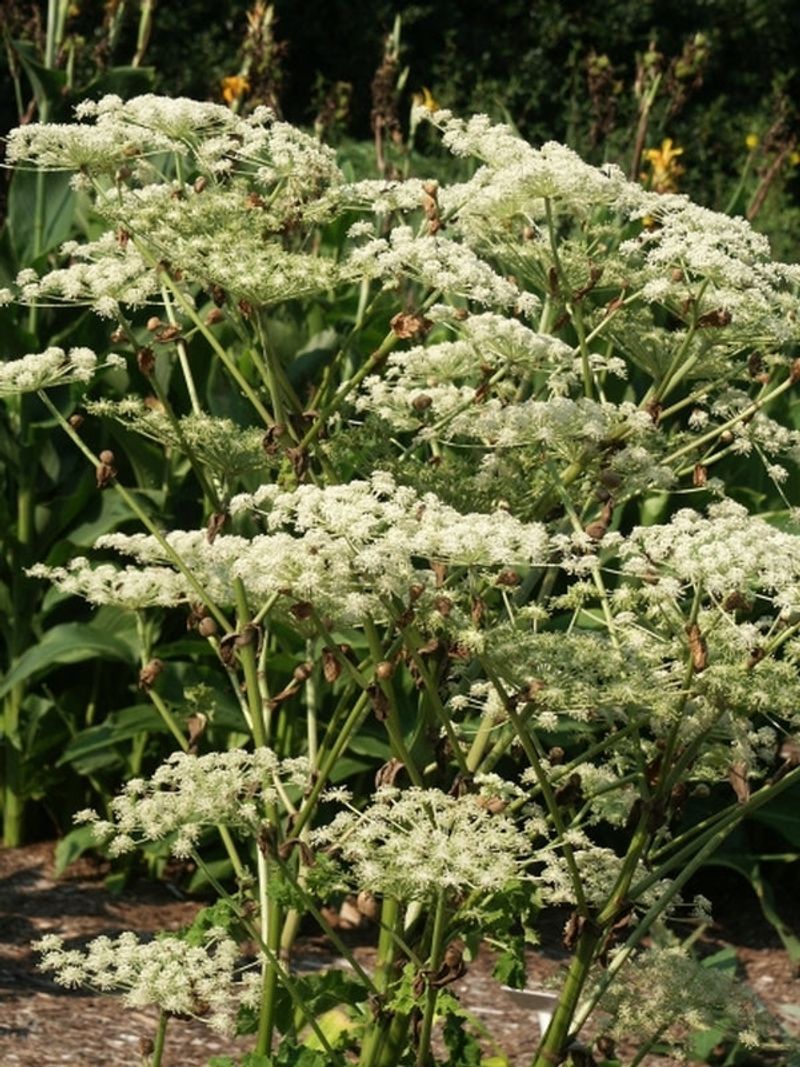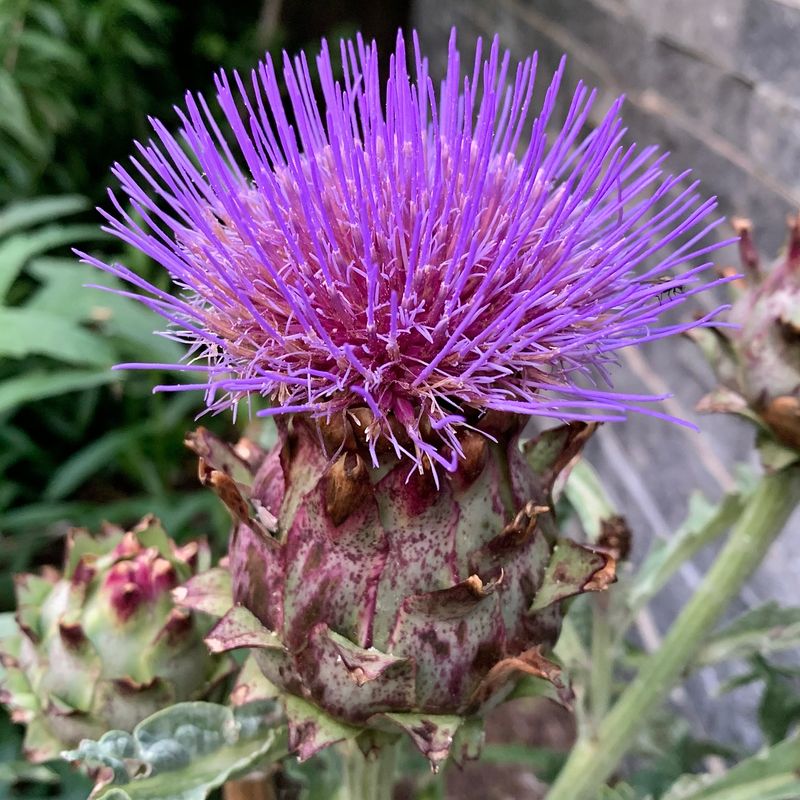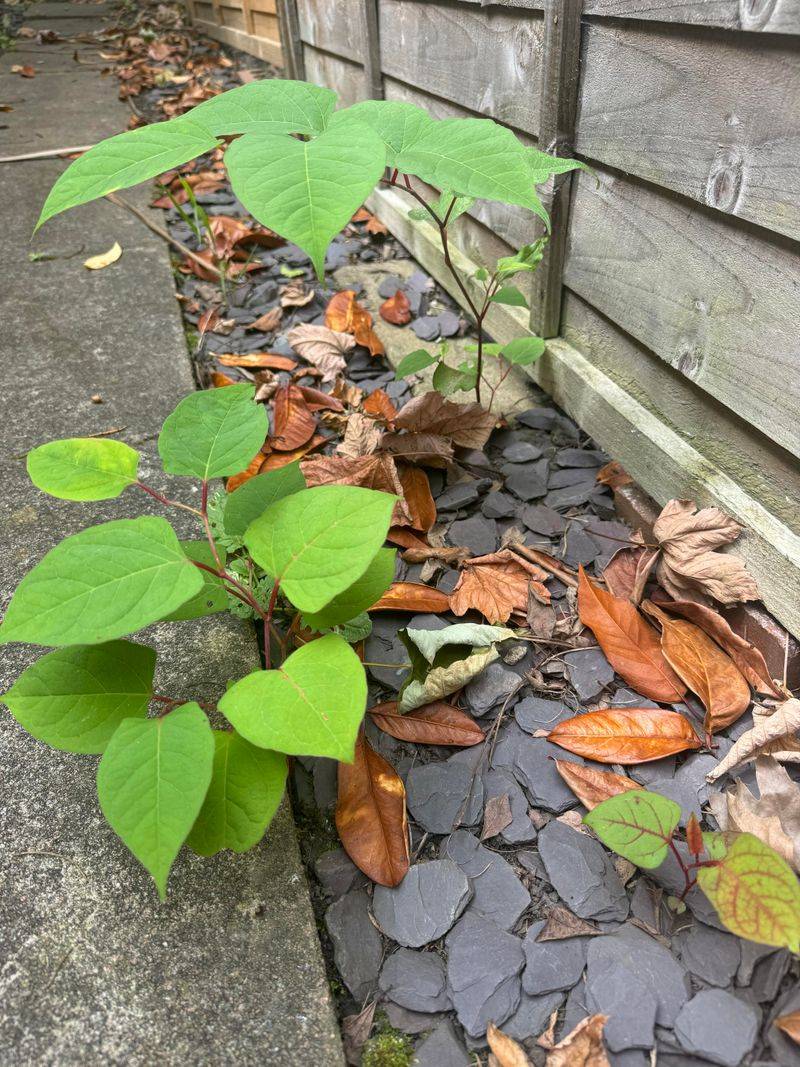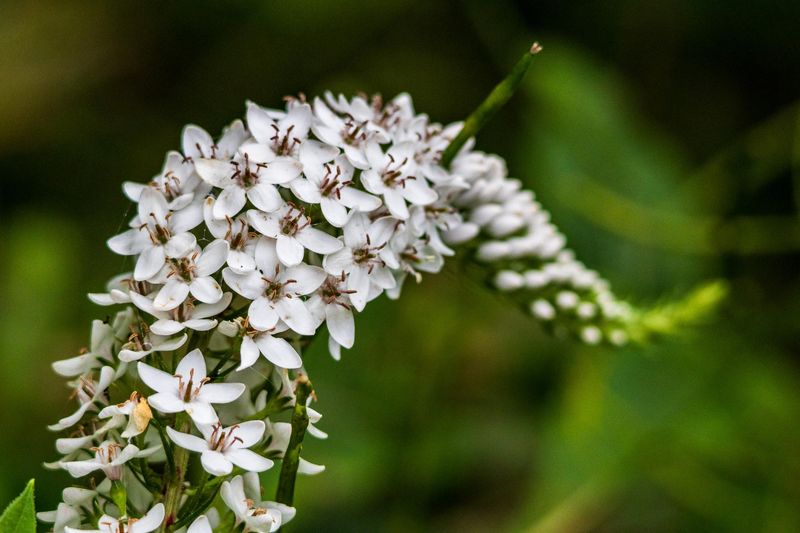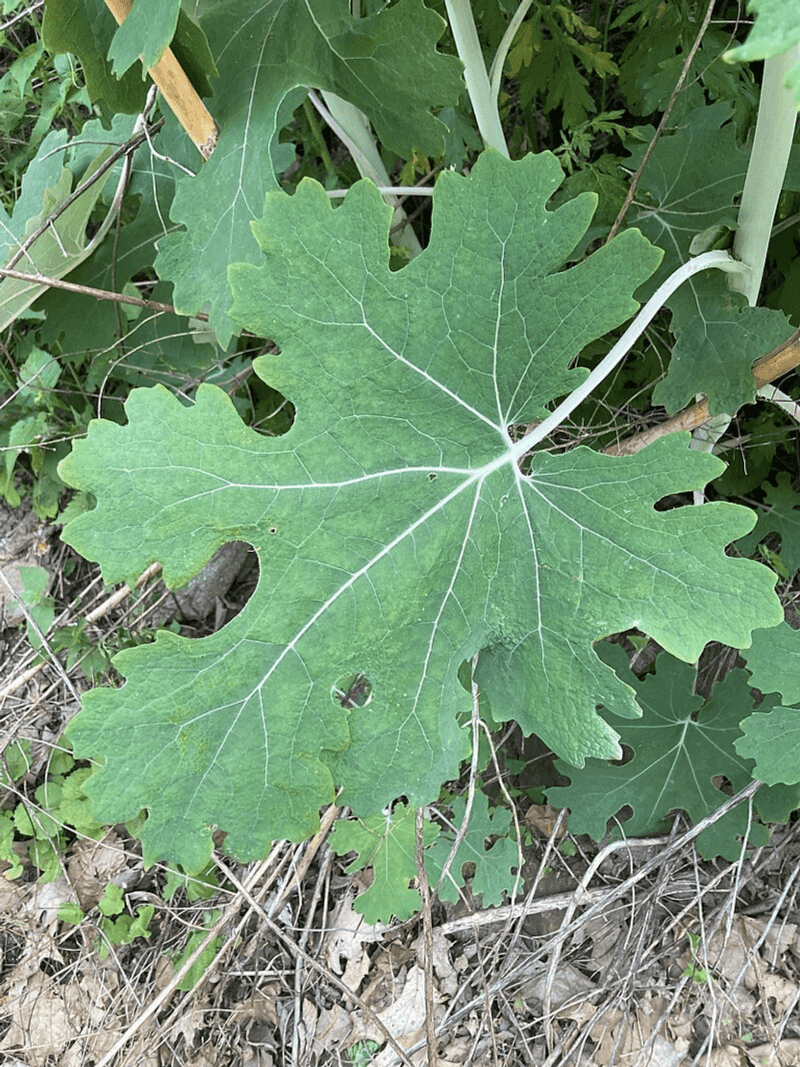Want to add height and elegance to your garden beds? Tall perennials are your go-to for creating structure, drama, and layered beauty. They make stunning backdrops, build privacy, and give your landscape that polished, intentional look.
From spiky delphiniums to towering Joe Pye weed, these plants offer months of blooms and seasonal interest. Add in the graceful sway of ornamental grasses or the bold colors of hollyhocks, and you’ve got vertical charm that anchors the whole design.
A quick heads-up: steer clear of overly aggressive spreaders like giant ragweed, Japanese knotweed, or common teasel. They might start strong, but they’ll quickly overrun your garden and crowd out the stars. Choose wisely, and let height work for you—not against you.
1. Delphinium
Standing like colorful sentinels in the garden, these classic beauties produce towering spikes of blue, purple, pink, or white flowers that can reach 6 feet tall. They bloom in early summer, creating a magnificent vertical accent.
Growing delphiniums taught me patience—they prefer cool summers and moist, rich soil. My north-facing border provides the afternoon shade they appreciate during hot spells.
They may need staking to prevent toppling in windy areas, but the effort pays off when those spectacular flower spikes emerge.
2. Joe Pye Weed
Native to North America, this gentle giant produces dome-shaped clusters of mauve-pink flowers that butterflies absolutely adore. The dusky stems reach 5-7 feet tall and create wonderful late-summer interest when many other perennials have finished.
Last summer, a family of goldfinches visited my Joe Pye Weed daily. Despite its somewhat unfortunate name, this isn’t a true weed but a valuable garden plant.
Plant it at the back of borders where its height won’t block smaller plants but can still provide that gorgeous textural backdrop.
3. Russian Sage
Clouds of tiny lavender-blue flowers appear on silver-gray stems, creating a soft, airy texture that sways gracefully in summer breezes. Growing 3-4 feet tall, Russian sage brings both height and a unique feathery texture to the garden.
My own Russian sage survived a record drought with barely any attention. This sun-lover thrives in poor soil and actually performs better with some neglect.
The aromatic foliage deters deer and rabbits, making it perfect for problem areas where other perennials get munched.
4. Coneflower
Modern varieties of these prairie natives now reach impressive heights of 3-5 feet. The daisy-like flowers with their distinctive raised centers appear in summer and last well into fall, providing months of color and texture.
Beyond the classic purple, newer coneflowers come in sunset hues of orange, red, yellow, and even green. The spent flower heads provide winter interest and food for finches.
After dividing my original plants, I’ve created a stunning drift that requires almost no maintenance and handles heat waves without complaint.
5. Hollyhock
Few plants make such a bold vertical statement as hollyhocks, with their towering flower spikes that can reach an impressive 8 feet tall. These old-fashioned favorites produce papery blooms in nearly every color imaginable from midsummer onwards.
Along my garden fence, hollyhocks create a cottage-garden feel that neighbors frequently comment on. Though technically short-lived perennials, they self-seed so reliably that they behave like permanent residents.
For best results, give them a sunny spot against a wall or fence where they’ll have some protection from strong winds.
6. Baptisia
Also known as false indigo, this North American native forms an impressive shrub-like clump 3-4 feet tall and equally wide. The blue, purple, yellow or white lupine-like flower spikes appear in late spring, followed by interesting seed pods that rattle in fall breezes.
My 5-year-old baptisia now anchors an entire border section with its strong architectural presence. Once established, the deep taproot makes it extremely drought tolerant and long-lived.
Unlike many tall perennials, baptisia rarely needs staking, maintaining its sturdy vase-shaped form through summer storms.
7. Ornamental Rhubarb
For truly dramatic foliage that makes a bold statement, few perennials match ornamental rhubarb. Massive crinkled leaves up to 3 feet across create an almost tropical effect, while the entire plant can reach 6 feet tall and wide.
In my partially shaded border, ornamental rhubarb provides a completely different texture from anything else in the garden. The huge leaves catch raindrops in the most enchanting way during summer showers.
Unlike edible rhubarb, these varieties are grown purely for their architectural qualities and sometimes produce tall flower stalks that add even more vertical interest.
8. Foxglove
The tubular spotted flowers of foxgloves create some of the most elegant vertical accents in the garden, reaching 3-5 feet tall. Their speckled throats and nodding bell-shaped blooms bring a touch of woodland magic to borders and cottage gardens.
Many foxgloves are technically biennials, but I’ve found that certain perennial varieties return reliably year after year. They self-seed so generously that there’s always a new generation waiting in the wings.
Partial shade keeps the flowers lasting longer, though they’ll tolerate full sun in cooler climates if given consistent moisture.
9. Goat’s Beard
Often mistaken for an astilbe on steroids, goat’s beard creates feathery plumes of creamy white flowers atop stems that can reach an impressive 4-6 feet. The fern-like foliage forms a substantial clump that provides texture even when not in bloom.
My goat’s beard thrives in a spot that stays moist year-round, where it receives morning sun and afternoon shade. The flowers appear in early summer, creating a frothy, cloud-like effect.
Despite its delicate appearance, this is a tough, long-lived perennial that requires minimal maintenance once established in the right location.
10. Veronicastrum
Commonly called Culver’s root, this underused perennial creates elegant candelabra-like spires of tiny white or pale purple flowers. The whorled leaves encircle the stems at regular intervals, adding interesting texture even before the 4-5 foot tall flower stalks appear in midsummer.
In my mixed border, veronicastrum provides a strong vertical element without being too heavy or dominant. Its slender profile allows it to weave between other plants without overwhelming them.
The flowers attract a variety of pollinators and maintain their attractive form well into fall, even after the blooms have faded.
11. Tall Garden Phlox
Fragrant dome-shaped flower clusters top sturdy 3-4 foot stems on these summer-blooming classics. Available in white, pink, lavender, purple, and red, tall garden phlox creates weeks of color when many spring perennials have finished their show.
Over the years, I’ve collected several different varieties to extend the bloom season from early July through September. Choosing mildew-resistant cultivars has eliminated the foliage problems that plagued older varieties.
Good air circulation and morning watering help prevent disease issues, while deadheading spent blooms often triggers a second flush of flowers.
12. Compass Plant
This prairie native sends up impressive flowering stalks 5-8 feet tall, topped with bright yellow daisy-like blooms that attract goldfinches and butterflies. The deeply cut basal leaves can reach 18 inches long, adding bold texture at the base.
Named for the way its leaves orient north-south to minimize sun exposure, compass plant develops an extremely deep taproot that makes it incredibly drought-tolerant once established. My specimen took three years to really get going.
The sturdy stems rarely need staking, making this an excellent low-maintenance choice for the back of sunny borders or naturalistic plantings.
13. Bear’s Breeches
Architectural is the perfect word for bear’s breeches, with its bold, glossy, deeply lobed leaves that create a substantial 3-foot clump. In summer, dramatic 4-foot flower spikes emerge with white flowers subtended by purple bracts.
After seeing them in English gardens, I added bear’s breeches to a partially shaded corner where they’ve become a conversation piece. The striking flowers make excellent cut arrangements and dry well for winter displays.
Though slow to establish, these Mediterranean natives are surprisingly hardy and drought-tolerant once their deep root system develops.
14. Giant Fleeceflower
Creating a bold tropical effect, giant fleeceflower rockets to 8-10 feet tall in a single season. The bamboo-like stems carry heart-shaped leaves and are topped with fluffy white or pink plumes in late summer that resemble cotton candy.
Unlike its invasive cousin Japanese knotweed, the well-behaved giant fleeceflower stays where you plant it. Mine creates a stunning backdrop along my property line, providing privacy without taking over.
The hollow stems can be cut down in late fall or left standing for winter interest, their reddish-brown color providing structure in the dormant garden.
15. Red Hot Poker
Torch lilies produce distinctive flower spikes in fiery orange, yellow and red that rise 3-5 feet above grassy, evergreen foliage. Their unique form adds both height and an exotic touch to perennial borders from early summer through fall, depending on the variety.
My red hot pokers survived an unusually cold winter that damaged many other perennials. Their architectural quality makes them perfect partners for ornamental grasses and other plants with strong forms.
Newer varieties offer reblooming qualities and a wider range of colors, including creamy whites and chartreuse that blend more easily with other garden flowers.
16. Angelica
Both ornamental and culinary varieties of angelica create impressive domed umbels of tiny white or pink flowers held 4-6 feet above large compound leaves. The hollow stems have a purple flush that adds to their ornamental value.
Though technically a biennial or short-lived perennial, angelica seeds itself gently around the garden, ensuring continued presence. In my woodland garden edge, it provides a wonderful see-through quality that doesn’t block views of plants behind it.
The dramatic seedheads extend the season of interest well into fall and even winter when dusted with frost or snow.
17. Cardoon
A close relative of the artichoke, cardoon creates a spectacular architectural presence with its deeply cut, silver-gray foliage that can spread 4 feet wide. In summer, dramatic purple thistle-like flowers appear on 5-6 foot stems, attracting bees and butterflies.
The Mediterranean heritage of cardoon makes it perfect for hot, dry spots where other perennials struggle. In my south-facing border, it has become the centerpiece that anchors the entire design.
Even in regions where it isn’t fully hardy, the impressive growth rate means it can be treated as an annual and still reach impressive proportions in a single season.
18. Japanese Knotweed
Despite its attractive bamboo-like stems and pretty white flowers, Japanese knotweed is one of the most invasive plants you could possibly add to your garden. Its aggressive underground rhizomes can spread 20 feet in all directions and push through concrete, asphalt, and building foundations.
A friend spent thousands trying to eradicate it after an innocent-looking cutting took over half their yard. In many regions, it’s illegal to plant or transport this species.
No matter how tempting its 6-8 foot height might be for creating privacy, the potential damage far outweighs any benefits.
19. Gooseneck Loosestrife
The arching white flower spikes of gooseneck loosestrife look innocent and elegant in catalog photos, reaching about 3-4 feet tall. Unfortunately, this aggressive spreader quickly forms a monoculture that chokes out neighboring plants through underground runners.
I made the mistake of planting it years ago, and I’m still finding new shoots 20 feet from the original location. Even small root fragments left in the soil will regenerate into new plants.
For similar looking flowers without the thuggish behavior, consider white veronicastrum or foxgloves which stay politely where you plant them.
20. Plume Poppy
The dramatic height (6-8 feet) and bold foliage of plume poppy make it tempting for back-of-border situations. The creamy plumes of flowers create a striking vertical accent in midsummer gardens.
However, its rampant spreading habit through underground runners makes it a nightmare in most garden settings. My neighbor’s single plant colonized nearly 200 square feet in just three years, popping up through other perennials and even into the lawn.
For similar dramatic height without the invasive tendencies, consider instead giant fleeceflower or ornamental rhubarb, which create the same bold effect without taking over.

